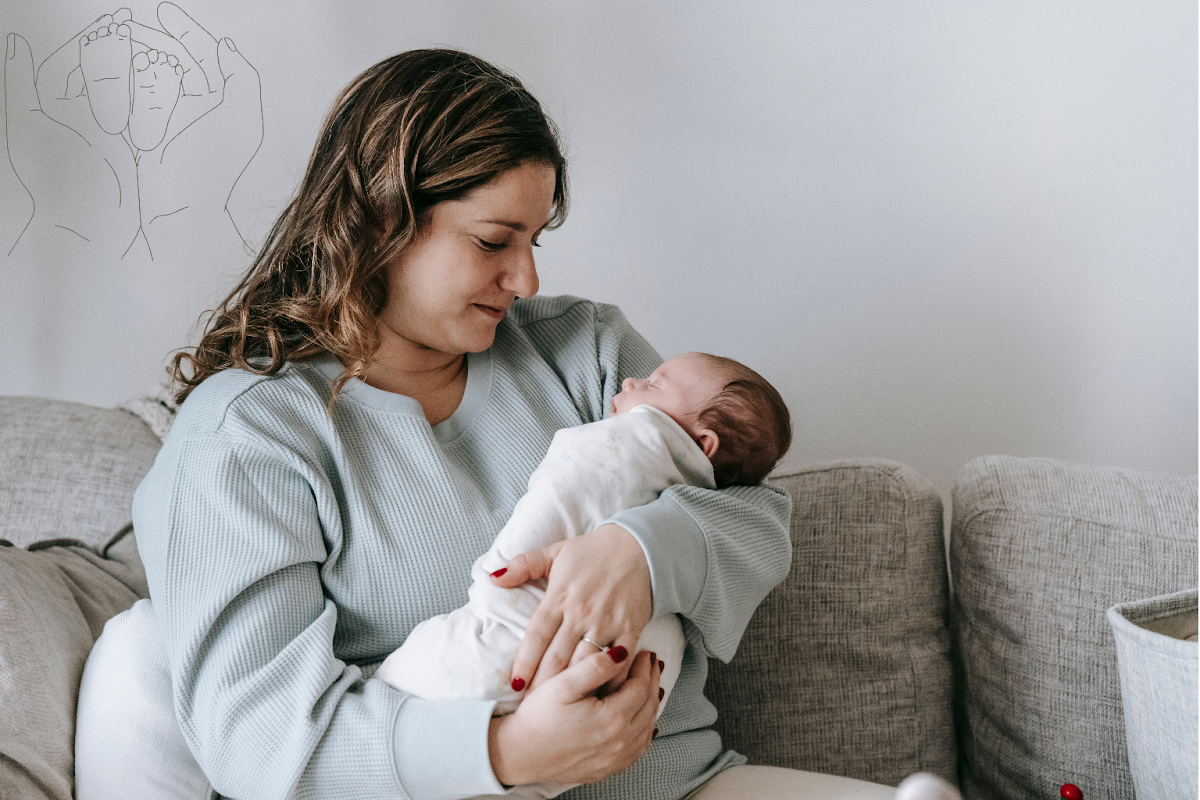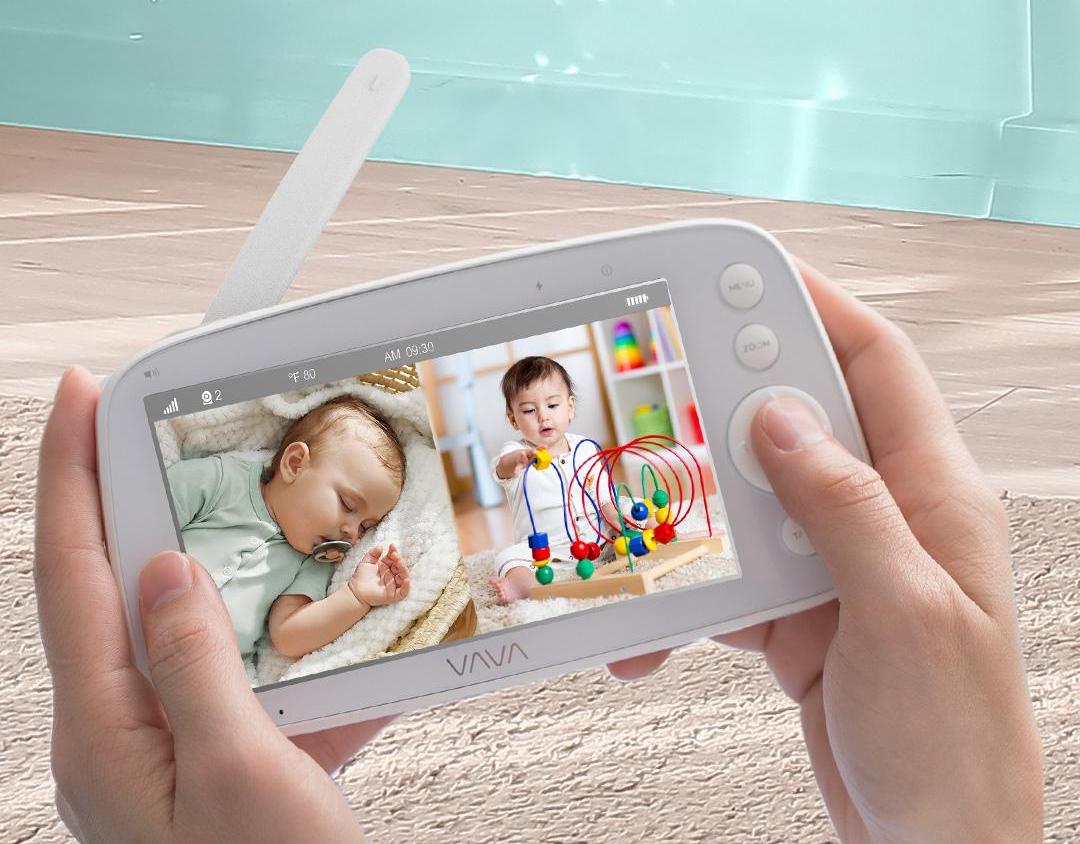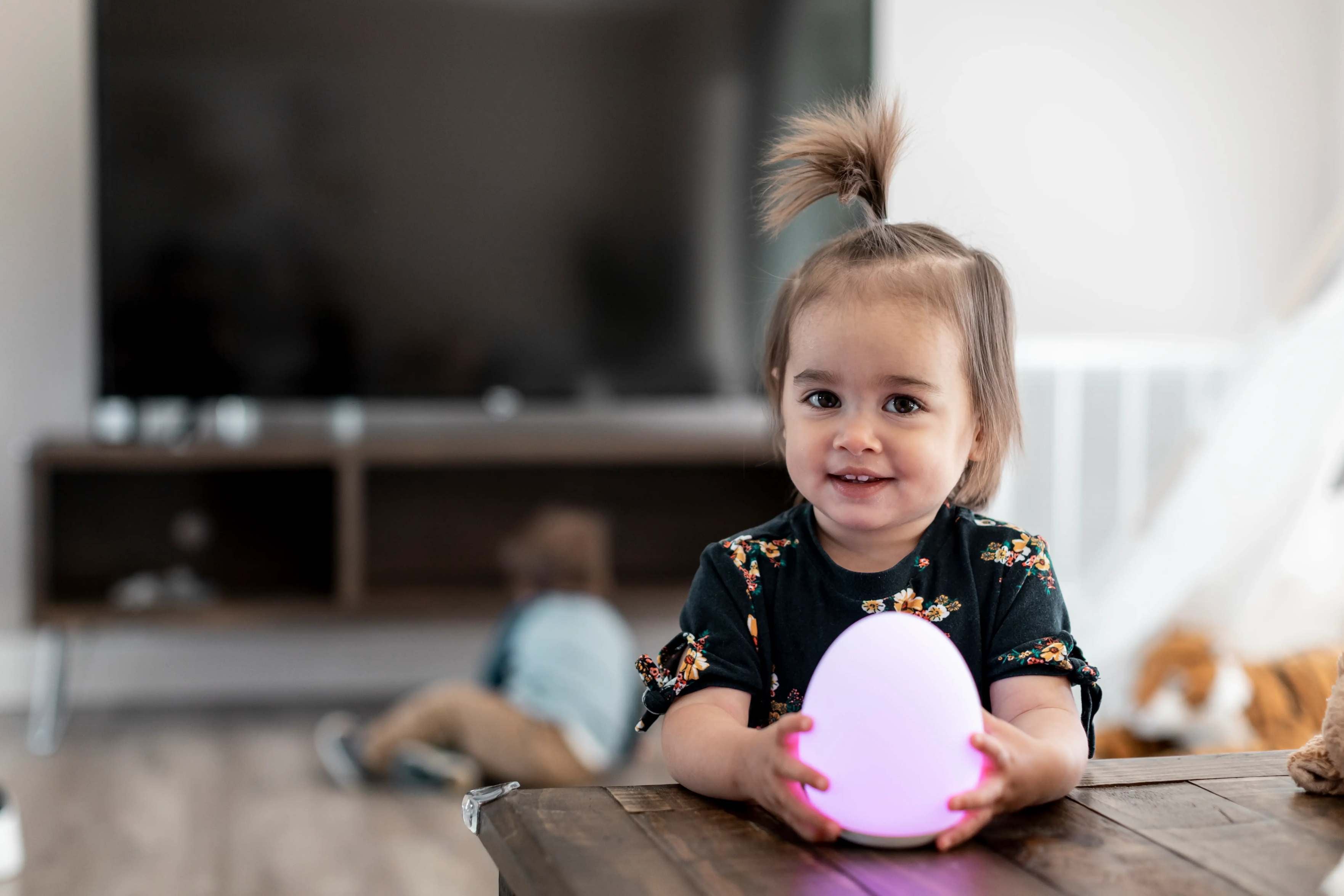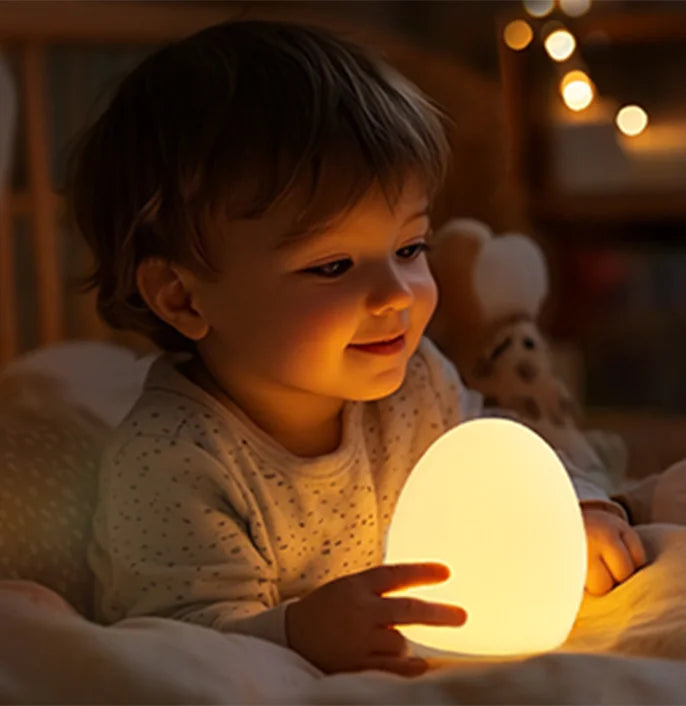Babies, tiny bundles of joy, arrive in our lives like whispers of hope, their innocence a profound reminder of life's purest wonders. But unfortunately, thousands of them die or suffer injuries every year due to improper parenting. These unexpected mishaps can be minimized by educating new parents on baby safety and newborn care.
This article aims to demystify the basics of baby safety, offering essential and actionable tips to protect your little ones from potential hazards.
Safe Baby Feeding Practices

Did you know that careful feeding can prevent up to 40% of common feeding-related mishaps in infants? As your baby grows from bottle feeding to first bites, here are some essential safety tips to keep in mind:
1. Milk-Feeding Stage
During the initial 6 months when your baby is exclusively on breast milk or formula, you must follow these safe feeding practices:
- Always hold your baby while feeding instead of propping up the bottle. Leaving your baby unattended with a bottle can raise the risk of baby choking.
- Never put your baby to bed with a bottle. This can cause ear infections and tooth decay.
- Avoid feeding strained foods or thick liquids in a bottle; they can even push the baby to choke.
- Find a comfortable breastfeeding position for both you and your baby. This may include cradle hold, football hold, or side-lying position.
- Prepare milk according to the manufacturer's instructions and check the temperature before feeding.
2. Introduction to Solid Foods
As your baby transitions to solid foods, take these safety measures to ensure a smooth and safe feeding:
- Start with single-ingredient foods that are easy to digest. Pay attention to how your baby responds to each new food.
- Be vigilant about the size and texture of the food. Ensure all pieces are small enough to prevent choking and are soft enough to be easily gummed.
- Keep breastfeeding or bottle-feeding while introducing solid foods. Milk should still be a primary source of nutrition until at least the first year.
3. High Chair Safety

Before starting to use the high chair, ensure that your baby can sit up on their own, and select a model with a reliable tray latching system to keep it securely in place.
- Always buy a high chair with a 5-point harness that includes straps over the shoulders, around the waist, and between the legs to prevent your child from slipping out.
- Position the high chair away from tables or countertops to prevent your child from pushing against these surfaces and tipping the chair.
- Most importantly, never leave your child unsupervised in the high chair to ensure their safety.
Create a Safe Baby Sleep Environment
Do you know that every year, nearly 3,500 infant deaths occur in the United States while sleeping? The leading cause of these deaths is Sudden Infant Death Syndrome (SIDS). Although there is no perfect way to stop SIDS, research indicates that a safe sleeping environment considerably lowers the risk. Here is how to accomplish it:
1. Put Your Baby on Their Back

Your infant should have every nap and overnight sleep on their back. SIDS risk is lower in babies sleeping on their backs than in those resting on their stomachs. Sleeping on the side might also cause problems as it raises your baby's chance of rolling onto their belly.
A Myth Bursted – Afraid of choking, many parents are reluctant to have their children sleep on their backs. Remember, the baby's air passage anatomy and the natural gag reflex won't let it happen. Even children with gastroesophageal reflux (GERD) are safer sleeping flat on their backs.
2. Use CPSC Approved Cribs
Your baby will sleep most safely in a crib or bassinet that meets Consumer Product Safety Commission (CPSC) standards. However, make sure your crib mattress fits firmly in the crib; otherwise, a gap between the crib walls and the mattress might trap your infant and cause injury.
The mattress should also be level and firm, so it shouldn't indent while your infant is sleeping on it. Your baby shouldn't sleep on any surface inclined more than 10 degrees, as it's unsafe.
Moreover, never leave soft toys, blankets, or loose bedding in your baby's crib because they might block the airway and cause death from suffocation. Instead, always use a fitted sheet.
Check the CPSC website carefully to be sure your crib has not been recalled—especially if it is used. Also, do not utilize a crib without instructions, missing components, or that is defective.
3. Share Room Instead of Bed
Sleeping with your infant on the bed is no less dangerous than leaving a heavy blanket in their cot. Rather, if you bring your infant into your bed to soothe or feed them, put them in their separate sleeping area when you're almost asleep. Consider the safest approach—the golden term "ABCs of safe sleep"—Alone, on their Back, in a Crib.
You may place your baby's crib in your bedroom but not in your bed for extra peace of mind. This will enable simple night-time monitoring and help to cut SIDS risk by as much as 50%.
4. Keep the Room Temperature Normal
Extreme temperatures, either too hot or too cold, can increase the risk of SIDS. It's a good idea to have a thermostat in your room, which should be kept between 68°F and 72°F (20°C to 22°C).
Do not cover your infants with weighted blankets, sleepers, or swaddles, as these can produce extra heat or cause suffocation. A good rule of thumb is to dress your baby in just one more layer than yourself. Also, remember to remove your baby's hat once indoors.
Baby Proofing Your Home
Making your home safe for your babies to play and wander requires several key steps. A few of them are mentioned below:
- Mount or anchor heavy furniture and TVs to the walls to prevent tipping. This becomes crucial when your infant starts to pull up and climb.
- Install baby gates to restrict locations including swimming pools and staircases. Make sure the gates are set up following manufacturer directions and fulfill the latest safety regulations.
- Cover electrical outlets with safe coverings that your newly crawling baby cannot easily remove but that adults can operate.
- Keep dangerous items such as medications, cleaning supplies, and sharp objects inside cabinets with child-proof locks.
1. The Role of Baby Monitors
Even after babyproofing your home, keeping an eye on your baby's activities is compulsory to keep them safe from accidents, and a baby monitor can help you in this regard.
Baby monitors are important tools for parents. They allow you to watch your child even when you're not in the same room. This way, you don't have to chase your baby around the home to keep them safe from hazards.
2. VAVA Baby Monitors
There are many baby monitors on the market. After comparing many and considering their pricing and features, VAVA baby monitors offer a good balance.
- VAVA Bambi 8" (VA-IH020)

Whether your child is resting or playing, this big 8-inch baby monitor with 1080P high-resolution lets you precisely observe every movement they make. Its ability to project up to four camera feeds concurrently on a split screen makes this monitor one of the best in the market.
- VAVA Bambi 5” Duo (VA-IH009)

Designed for parents with one or two children, the VAVA Bambi 5” Duo includes a 5-inch HD 720P display. It can connect with up to four cameras, displaying live video from two at a time on a split screen. Additionally, it offers long-range connectivity with clear video and audio reception throughout your home.
- VAVA Bambi 5" (VA-IH006)

This is the most budget-friendly option among the VAVA monitors. VAVA Bambi 5" comes with a 5-inch HD screen that offers clear 720P visuals. It can only show feeds from one camera at once but features a Two-Way Talk System through which you can communicate with your baby wirelessly from a different room.
Special Discounts
During Baby Safety Month (September), all VAVA baby products are available at a 15% discount. Plus, upon purchasing any monitor, you will receive a free baby camera bracket.
Emergency Preparedness
Choking is a significant risk for young children, particularly because they explore the world by putting objects into their mouths. This can lead to the airway becoming blocked. If you ever find your child in such a condition, follow the steps below:
- Check for signs of choking, such as high-pitched squeaking noises, no sound, no cough, and pale or blue skin color.
- If you see any of the above symptoms, start immediate emergency treatment and call 911.
- Hold the infant face-down along your forearm, using your thigh or lap for support.
- Give 5 firm back blows using the heel of your hand between the infant's shoulder blades.
- Perform 5 quick chest thrusts, pressing 1 ½ inches deep, keeping the head low.
- Repeat steps 4 and 5 until the infant coughs, cries, or becomes responsive.
- If the infant becomes unresponsive, lay them on a flat surface and begin CPR.
On-the-Go Safety
Keeping your baby safe while on the move involves more than just vigilance. It requires the right equipment and knowledge. Here's how you can ensure your baby's safety in cars and with strollers:
1. Car Seat Safety
When traveling by car, always use an FAA-approved safety seat for your baby. As per the American Academy of Pediatrics, avoid buying used seats because you never know if they have been in an accident before. Also, make sure to carefully read the installation instructions for both the car seat and your vehicle's owner's manual for the correct setup.
Over the first two years, position your child's car seat rear-facing and in the middle of the back seat for maximum protection. Remember to adjust the harness straps as your infant grows and regularly check that your child is still within the car seat's height and weight limitations.
2. Stroller Safety
To prevent falls, always secure your kid in the stroller harness and avoid hanging heavy bags on the handlebars, as this might cause the stroller to topple over.
When the stroller is not in motion, engage the brakes to prevent it from rolling, especially on slopes or uneven surfaces. Similarly, you must make sure all locking systems are activated to keep the stroller open throughout operation. This practice can help you and your baby enjoy your outings without worry.
Supervision and Awareness

Ensuring your child's safety involves constant vigilance and the consciousness of their surroundings. Here's how you can keep your little ones safe by monitoring and realizing potential threats before time:
1. Constant Supervision
Always keep a close eye on your child, especially near water, such as pools and bathtubs. Install fencing around pools and make sure gates are securely latched. Additionally, closely supervise your child in playing areas to prevent injuries from falls or collisions. Never leave them unattended outdoors, even for a moment.
2. Recognizing Hazards
Be proactive in identifying risks in your child's surroundings. Ensure playground equipment is safe and check for hot surfaces on slides and swings to prevent burns. Cover the ground under playsets with shock-absorbing materials like sand or mulch to reduce the impact of falls.
Beyond play areas, ensure your entire home is free from potential hazards like near-ground sockets and cleaners. Instruct your child to stay away from unfamiliar animals and harmful tools like lawnmowers; furthermore, regularly assess and eliminate any items or substances within their approach that can endanger them.
Conclusion
By ending this article, the advice for new parents is to stay informed, proactive, and vigilant in safeguarding their baby. You can do it by securing your home, learning emergency procedures, or using reliable devices like baby monitors. As we enter Baby Safety Month, it's an excellent time to enhance the safety measures you have in place for your little one.
VAVA is offering special discounts on their baby monitors from September 10 to 20. These monitors are designed to help you keep a close eye on your baby, offering peace of mind while not disturbing your day-to-day chores. Take action today and ensure that every coo and giggle from your baby is safeguarded by your loving care.





Share: